Enjoy the secret side of Thailand with this guide to the best things to do in Nan.
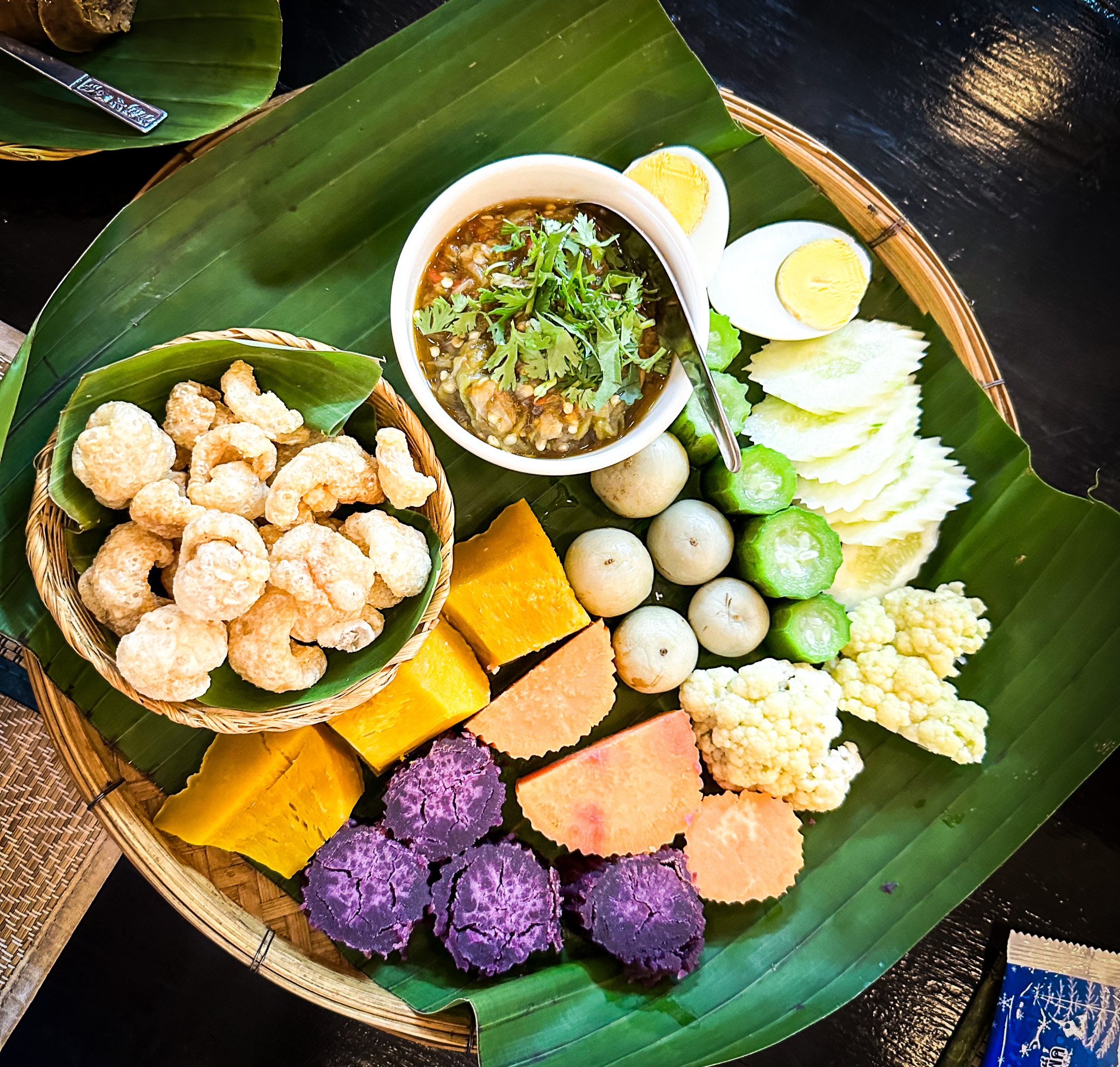
An Introduction to Nan, Thailand
First things first, let’s reassure you about the pronunciation. It’s closer to naan bread than it is to the nan that rhymes with pan.
Then, we can get down to business.
Where is Nan?
Tucked up in northern Thailand, right by the border with Laos, Nan is both a small time city and one of the country’s 76 provinces. A world away from the beaches and their resorts, there’s nothing sleepy about this place.
Highways are slick, with smooth tarmac rivers slicing through the land, signposted as they go. The city bustles with markets, monks, temples and museums. But the most visible attraction is what you see as you glide in to land: the oceanic waves of green that make up the natural peaks in this region.
Hikers have long known what the rest of us are just waking up to: that this region is beautiful and deserves to be explored.
I first visited Thailand over 20 years ago, and while Bangkok and Chiang Mai have changed beyond recognition, travel through Nan province reminded me of why I fell in love with Thailand in the first place.
Disclosure: I visited Nan as a guest of Amazing Thailand. However, as ever, as always, I kept the right to write what I like. What’s the point otherwise?
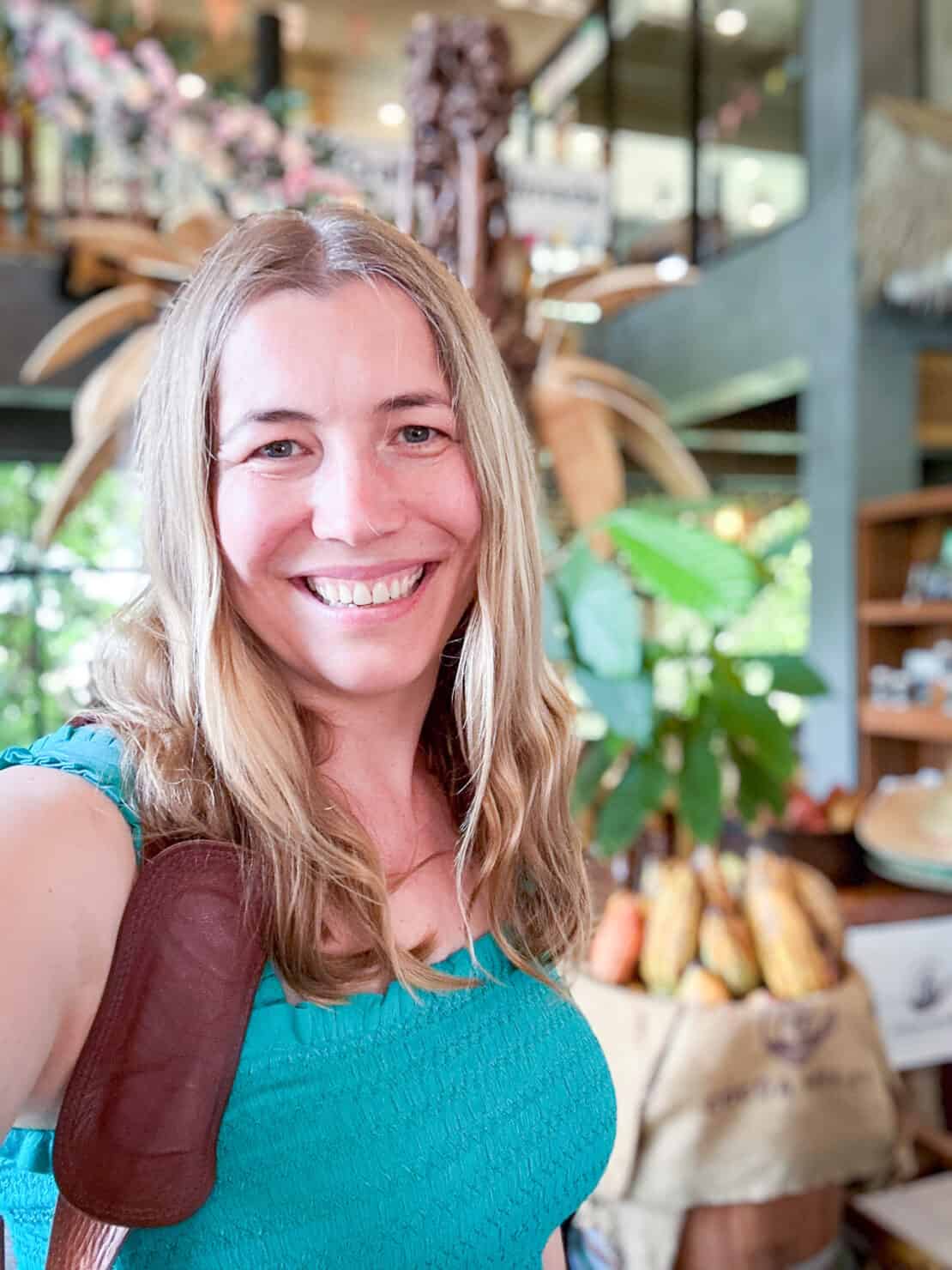
Why You Should Visit Nan Province
Whether mixing khao soi in a roadside cafe, scrunching salt between your hands at a sacred site or breathing in the scent of incense at a temple, Nan offers a taste of Thailand that embraces both culture and calm.
Steeped in history, as border areas are, you’ll see the influences of the Tai Lue people, who migrated from Yunnan, China in around the 14th century. Since then, Nan has been part of the Lanna Kingdom, ruled by a succession of kings and controlled by the Burmese before returning to Thailand in the late 19th century.
As you’d expect, temples, museums and houses tell the tales of the times but so, too, do the traditions.
Authentic feels like an overused word in travel but in Nan it rings true. People may come here for the landscape first of all. But they stay for the deeper, cultural side of Thailand.
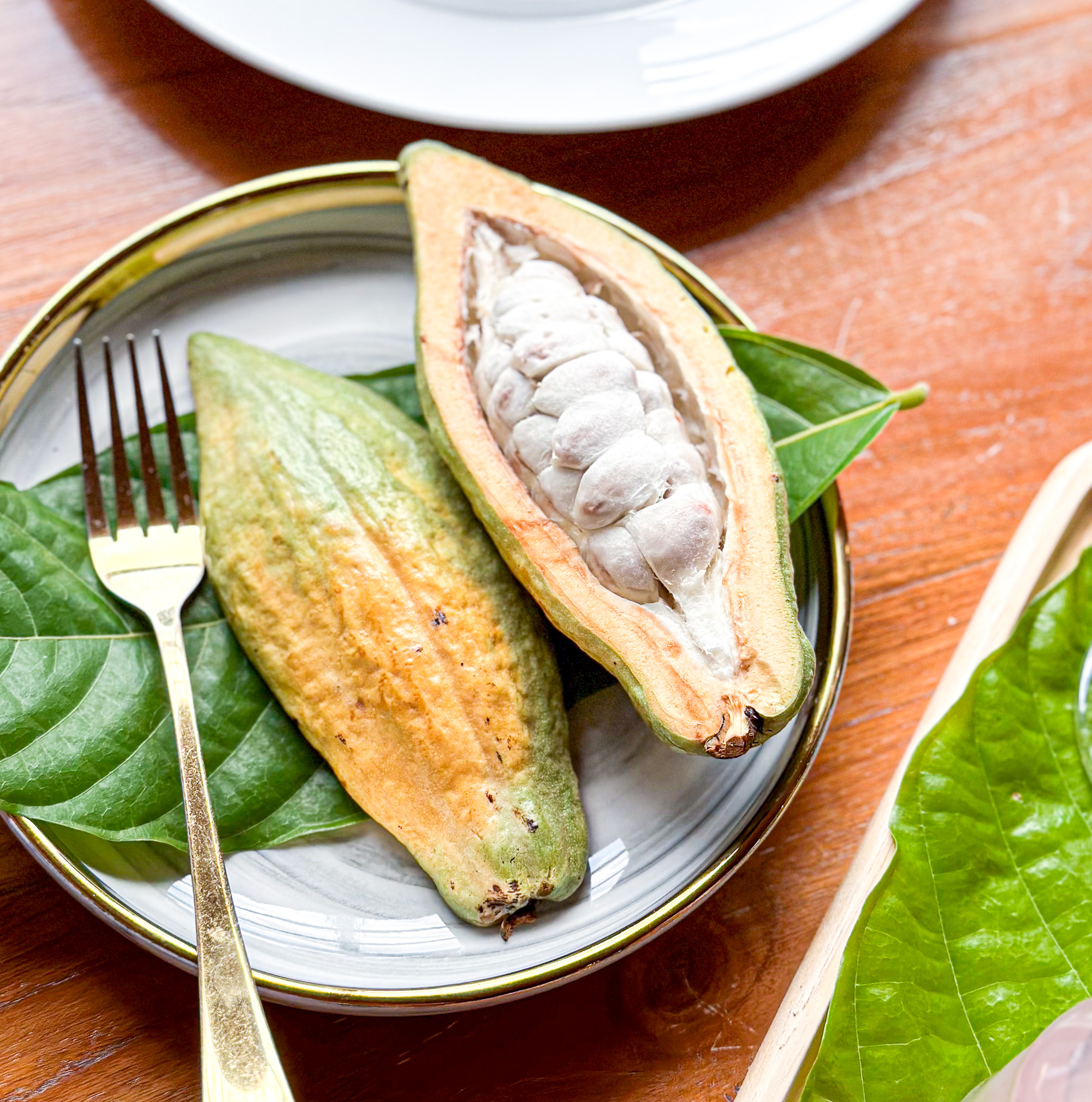
When is the best time to visit Nan?
The cool season, which spans from November to February, is the most popular time to visit as temperatures settle between 10-25°C. That’s an ideal climate for exploring historic sites or trekking, biking, and camping.
For those who prefer warmer weather, the hot season from March to May offers temperatures around 30°C. This is an ideal time for swimming and visiting waterfalls, which are at their most impressive during these months.
To avoid the crowds and experience Nan’s lush green landscapes, consider visiting during the rainy season from June to October. Although less popular with tourists, showers are typically brief and occur in the evenings or at night, leaving the days more or less dry.
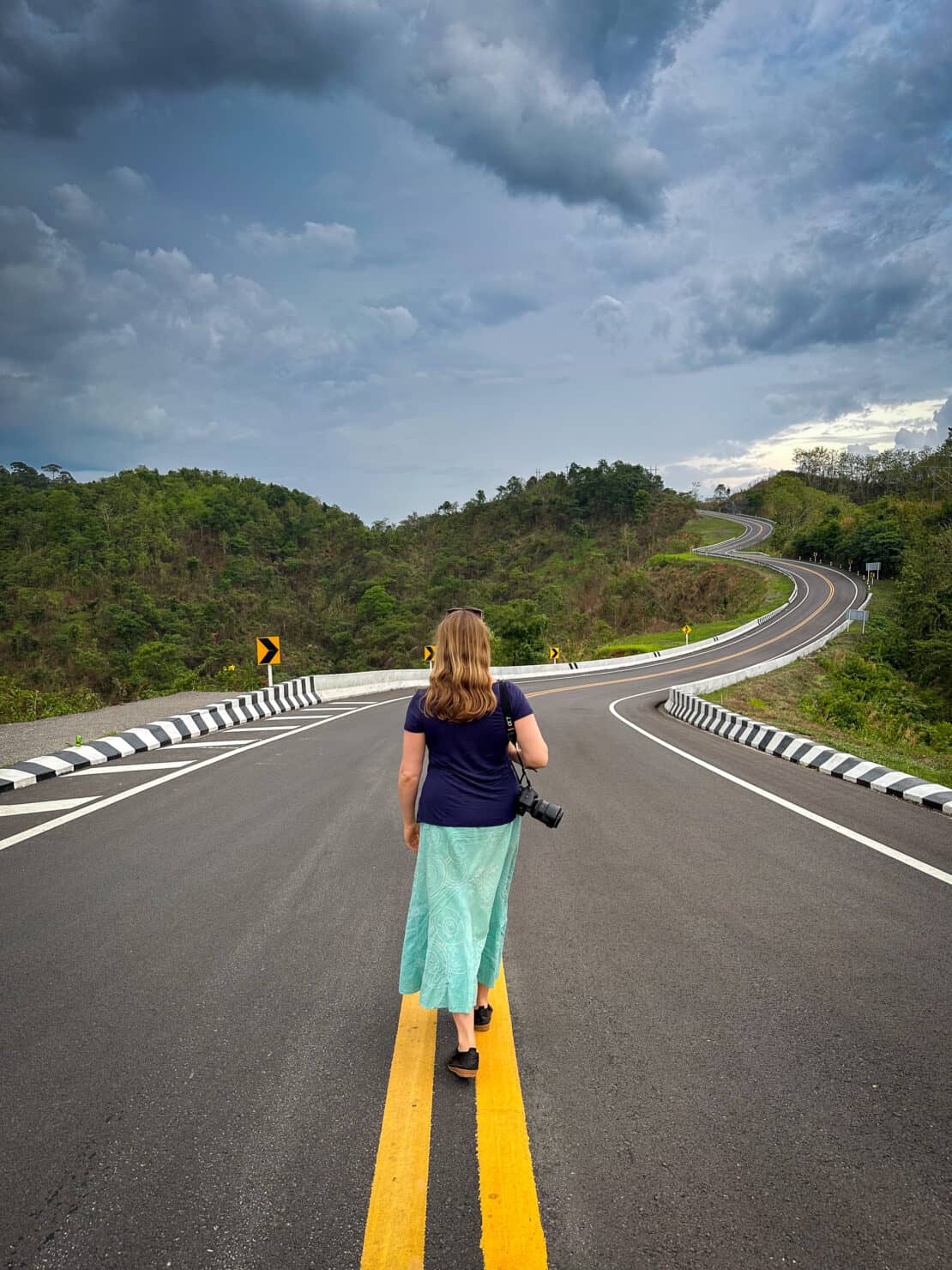
How do you get to Nan?
Nan has some pretty good transport connections, even though it’s not as well known on the travel route.
Here are four different ways to travel to Nan:
- By Air: Nan Nakhon Airport (NNT), located in the province’s capital city, offers daily flights from Bangkok. It’s small and easy to navigate.
- By Bus: Numerous bus companies operate daily services between Bangkok and Nan Province. Buses depart from Bangkok’s Northern Bus Terminal (Mo Chit) and take roughly 9-10 hours to arrive in Nan. Alternatively, buses from Chiang Mai’s Arcade Bus Station take about 5-6 hours, while travelling from Chiang Rai takes approximately 4-5 hours.
- By Car: If you’d rather drive, car rentals are available in Bangkok, and the trip to Nan Province takes around 8-9 hours, depending on traffic and road conditions.
- By Train: The closest train station to Nan Province is in Phrae, situated about 90 kilometres away. From there, you can catch a bus or take a taxi to reach Nan.
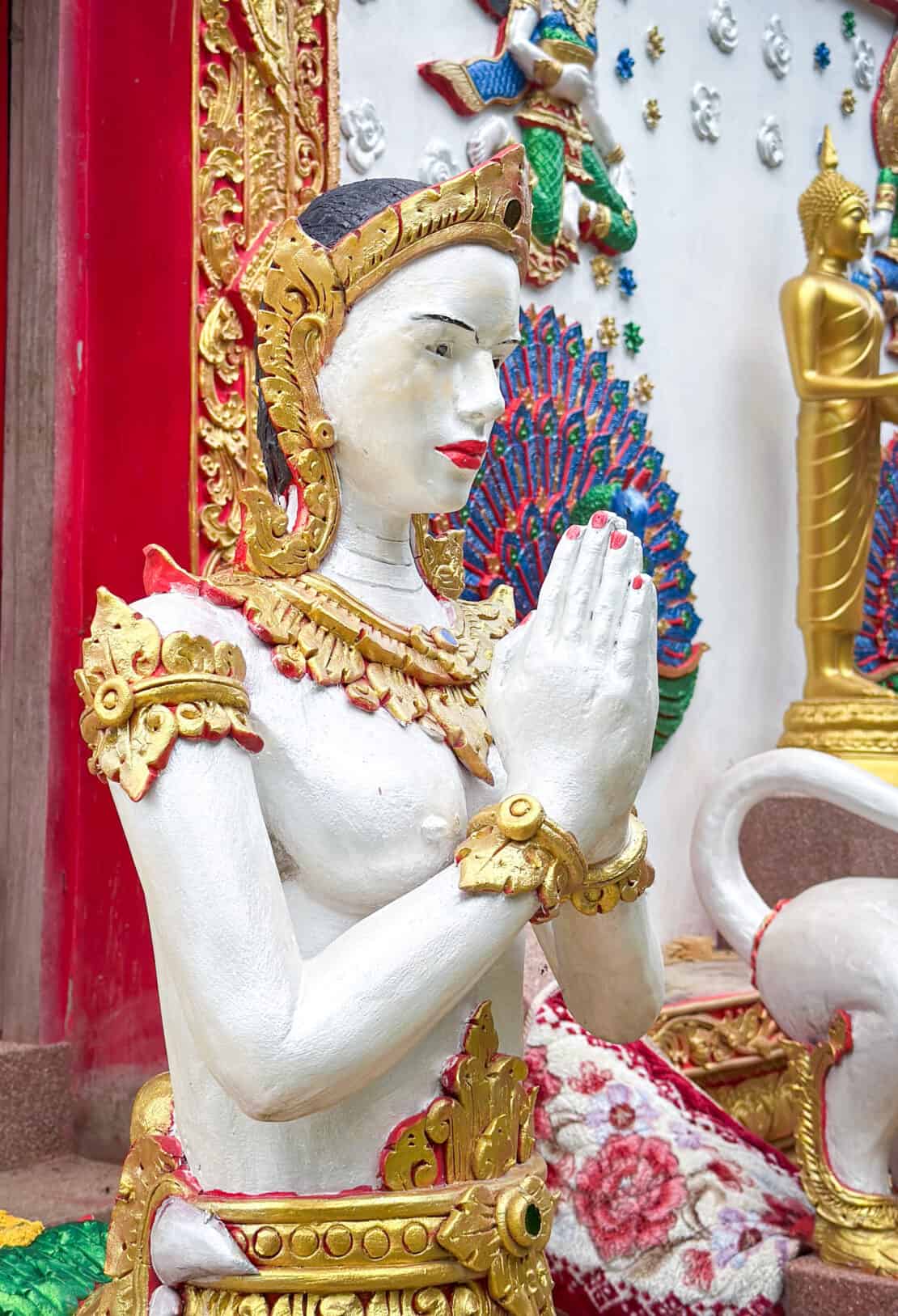
The Best Things to Do in Nan
From ancient temples to salt and chocolate, you will find plenty of tourist attractions to discover in Nan. Here are a few ideas on how to plan the perfect trip.
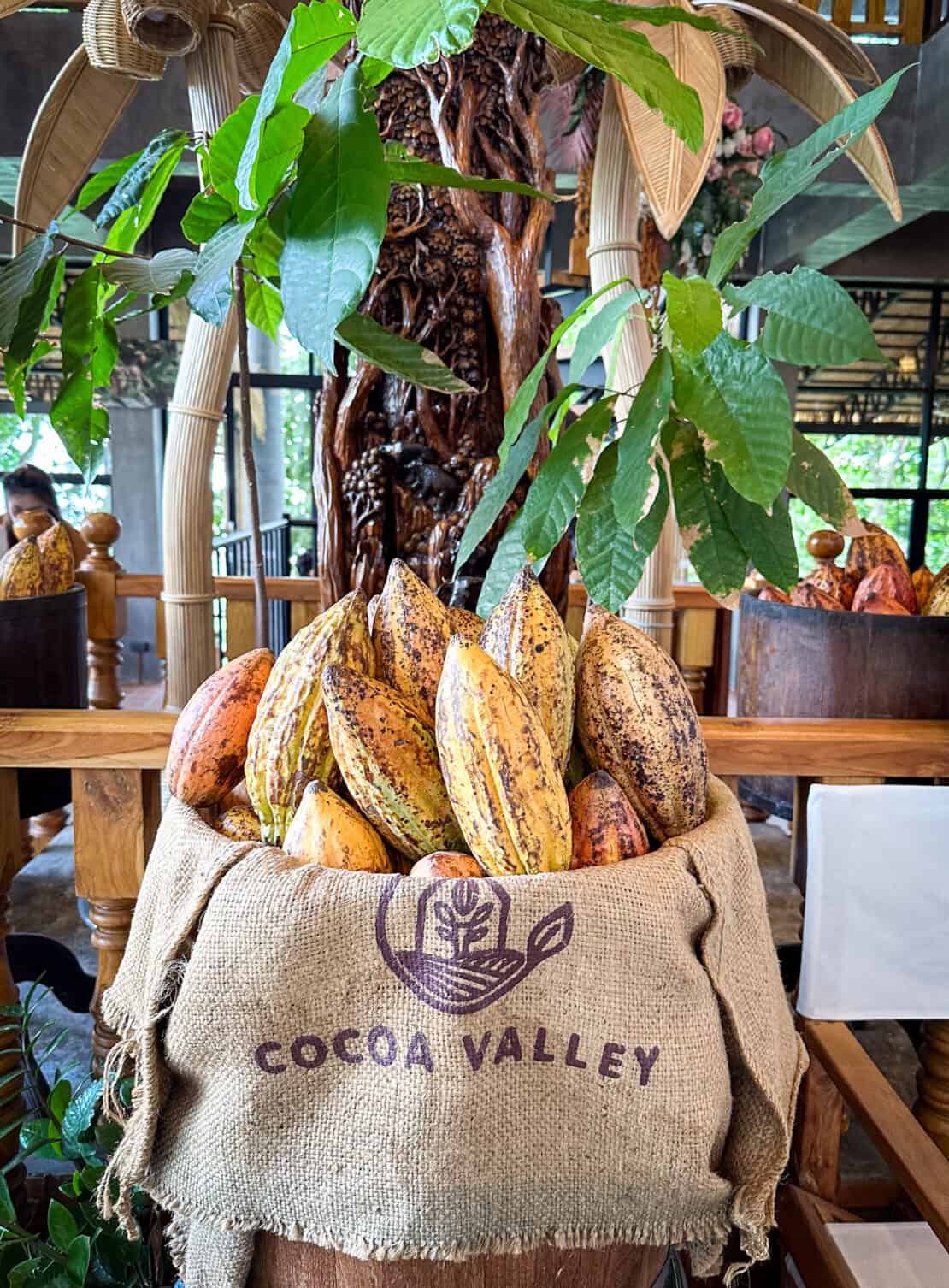
Cocoa Valley
Cocoa Valley is proof that Nan doesn’t dwell in the past. This bold and beautiful initiative combines instagrammable aesthetics in the restaurant with a fun and interactive chocolate workshop nearby.
You can walk around the cocoa plantation with a guide, learning about the plants, the fermentation, the tempering. Before rolling up your sleeves and having a go yourself.
Chocolate is new to Thailand as a crop and it’s intriguing to watch how quickly it’s become popular in the hipster cool cafe next door. There, cocoa arrives in a myriad of dessert forms amid the bamboo and cooling water spray.
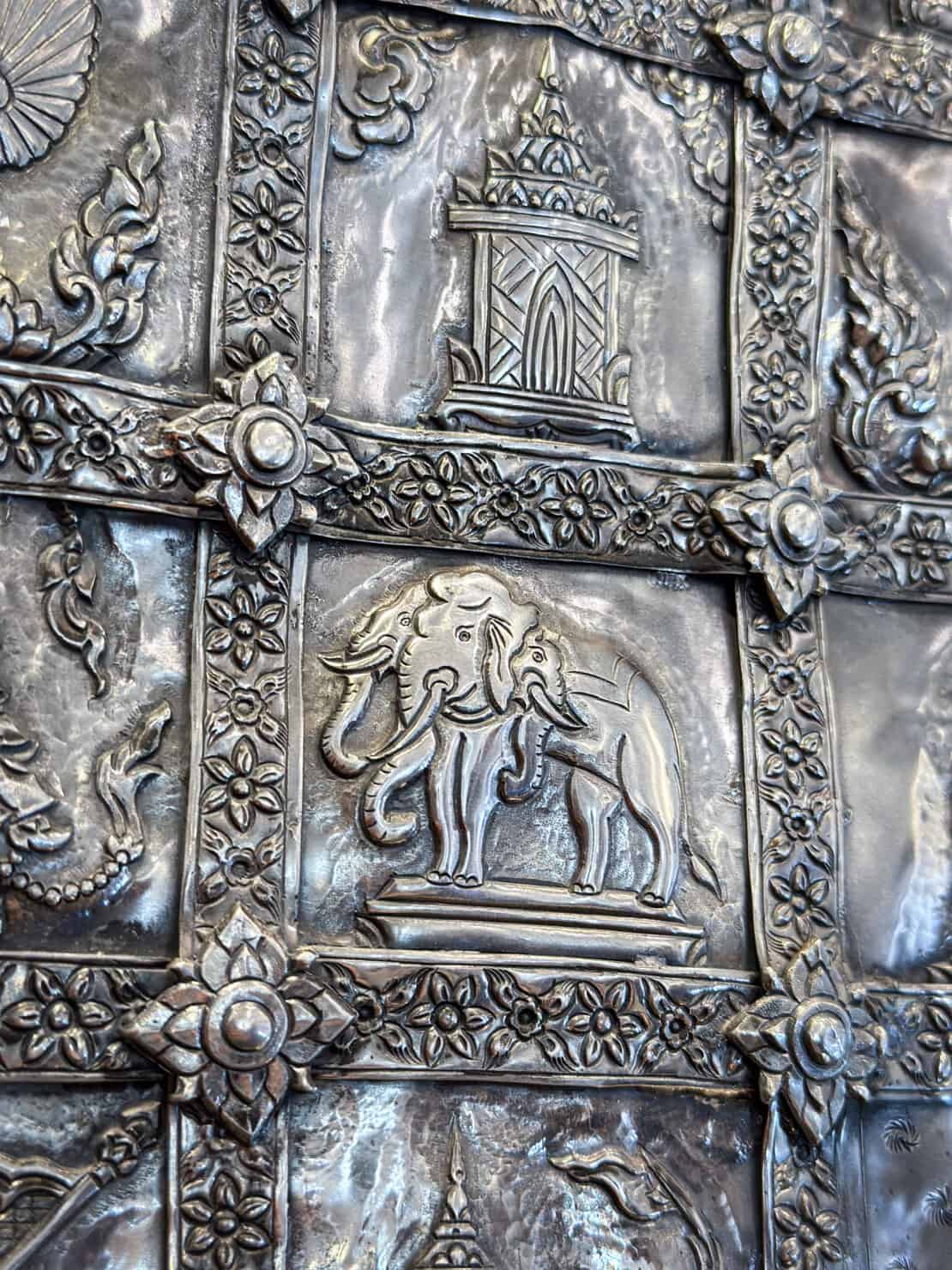
Doi Silver Museum
At the other end of the scale, the Doi Silver Museum and workshop celebrates the heritage of the past. In particular, the place tells the story of the Yao and Mien tribes through their intricate metalwork and artefacts.
Examples include wedding jewellery, urns and vases and at the end, you can see people hand crafting the silverware while you shop.
Inside tip: don’t be surprised if someone gives you an egg necklace. It’s a Yao tradition and it’s supposed to be both attractive and a handy snack if you get hungry on your voyage further on.
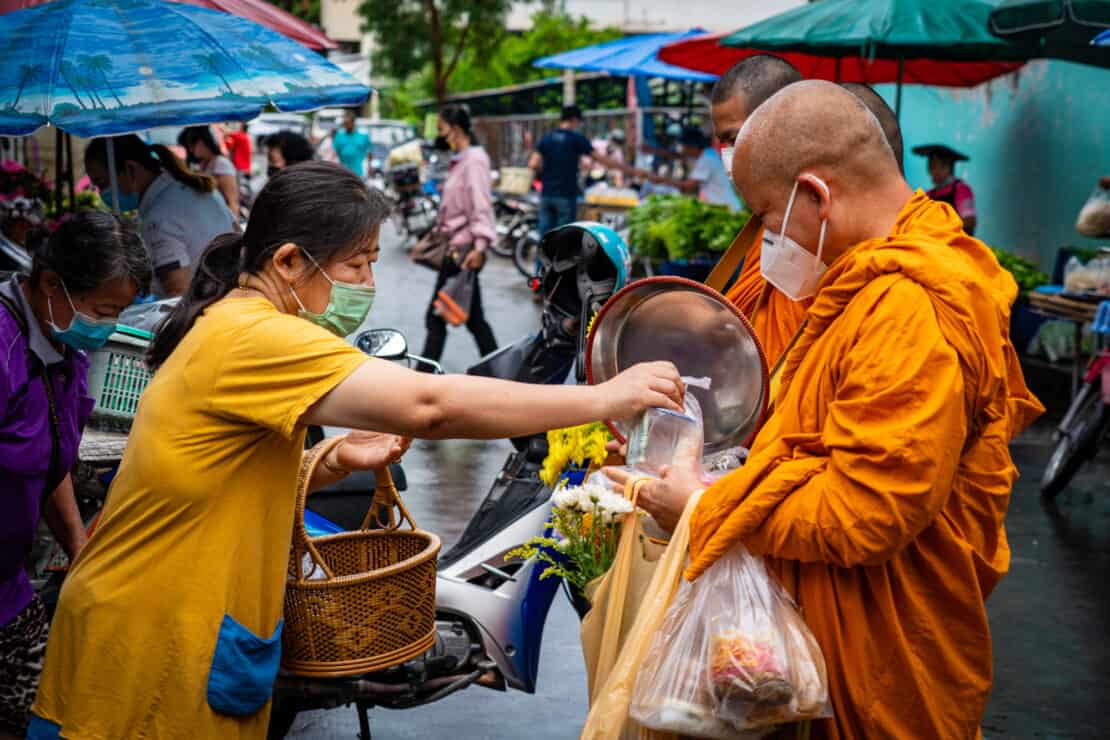
Giving Alms to Monks
OK, I’ll admit it. I felt enormously awkward about this to begin with but was reassured time and again from our Thai hosts that giving alms to monks would feel respectful and not exploitative.
In Thailand, many men become monks for a while, from six months to sixty years, even if they then return to “normal” life.
Draped in bright orange robes, they walk through the streets in the early morning and anyone is welcome to provide alms. In this case, alms involved chocolate bars, toothpaste, fizzy drinks and tissues, somewhat unceremoniously wrapped in a plastic bag. Monks are not allowed to cook and so giving raw ingredients is not encouraged.
Having placed the goods into the alms pot that the monks hold, you then dip your head or drop to your knees to receive a blessing through a prayer.
Inside tip: dress modestly to cover shoulders and knees and take your lead from local people.
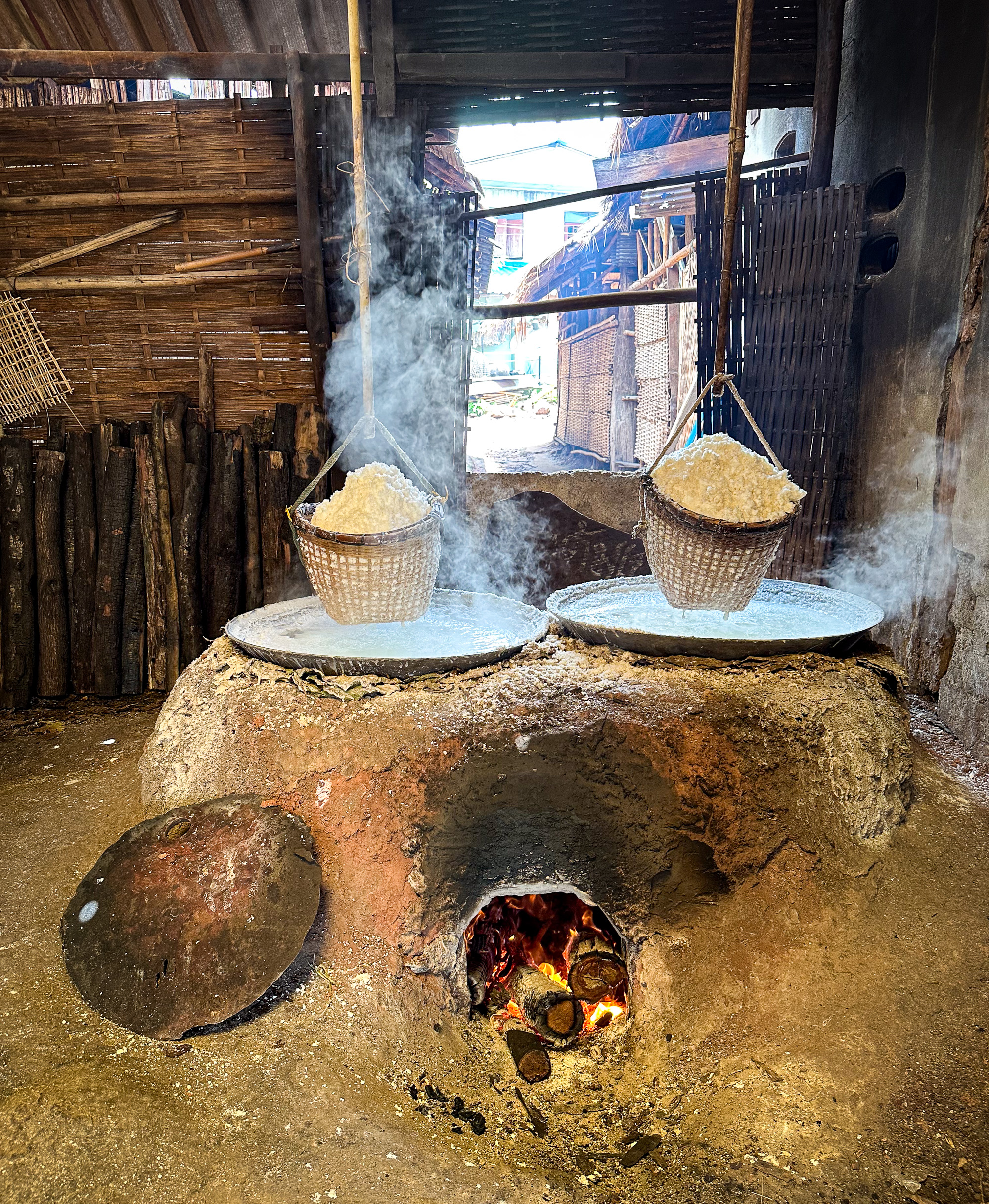
Scrunching Salt in Bo Kluea District
For a more unusual experience, uncover the curious resources of the Bo Kluea District, a peaceful enclave nestled amidst rolling hills and thick forests. This picturesque region is known for its ancient salt wells, which produce the highly sought-after “Bo Kluea” rock salt.
Only men are permitted to draw salt and they must first pray in a small temple nearby. Women can peer into the well from a designated step. And everyone can shop the many stalls that surround the wells, where you can find salt scrubs in every scent imaginable.
The salt water itself must be boiled for five hours and then left to dry for a further 36. There’s something quite poetic and sensory about watching this take place and dipping your hand into the vats of scrunchable salt.
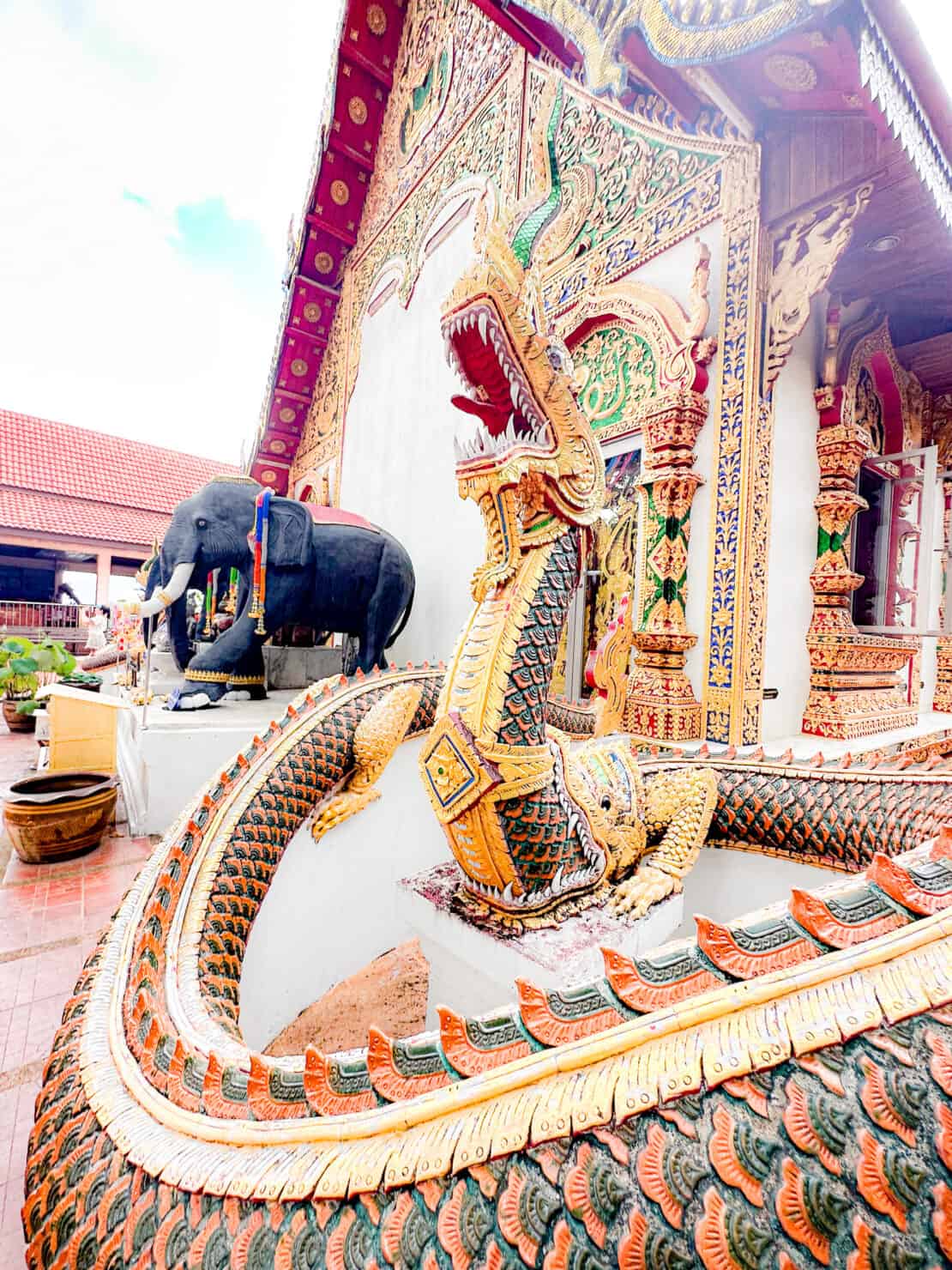
Admire Thailand’s Beautiful Temples
A visit to Thailand is nothing without a visit to a temple. With so many intricate, gilded glimpses into history and culture scattered across the land, it is easy to accidentally veer into a spot of temple fatigue.
So, I’ve emphasised the highlights if you’re really short on time. But consider visiting the others, too. You just may need to pace yourself.
Wat Phuket: Serene with Great Views
Need a moment of peace? Embrace the tranquillity of Wat Phuket, a temple nestled amidst the forests and rolling hills.
This secluded sanctuary, with its exquisite murals and ornate statues, provides a setting for quiet contemplation and meditation. Imagine the soothing sounds of rustling leaves and gentle breezes lulling you into a state of relaxation.
And if the temple doesn’t do the trick, a visit to the nearby Ban Tai Lue Café for refreshment and great views will.
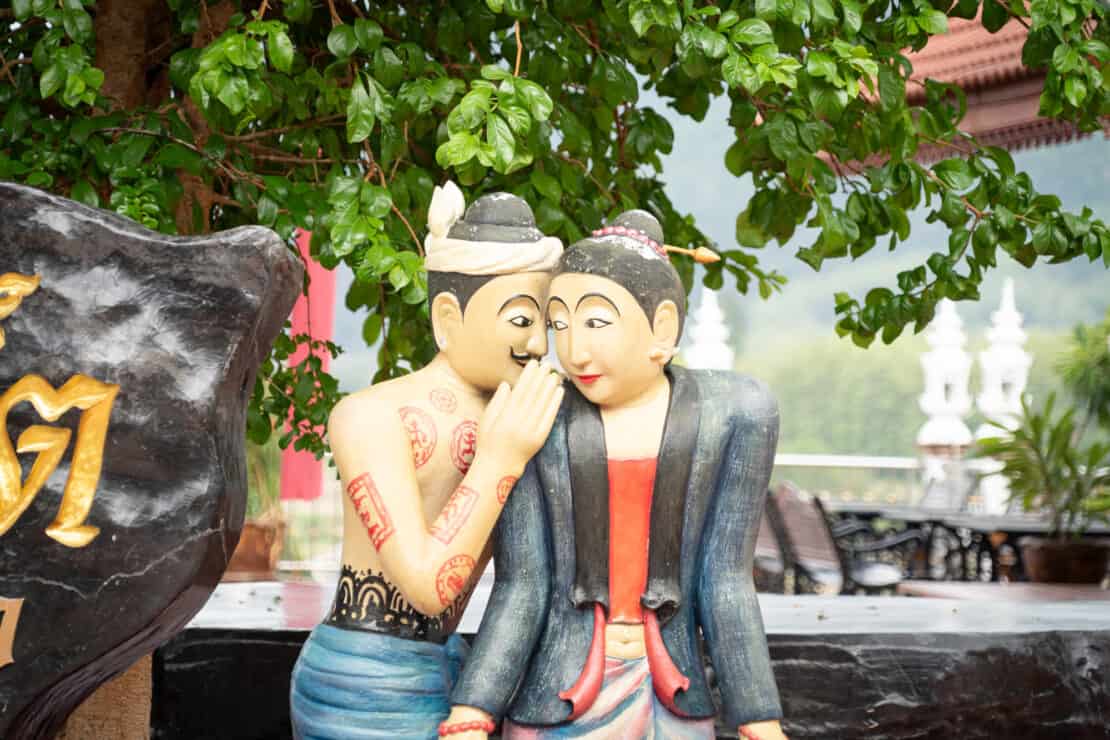
Wat Phumin: The Famous Lovers
Witness the craftsmanship at Wat Phumin, a 16th-century temple celebrated for its exquisite murals and detailed woodwork. With its unique cruciform design and grand central pillar, it’s something of a surprise that this architectural marvel is adorned with striking images of everyday life and religious themes.
The most famous is the renowned Whisper of Love Mural, which tells of lovers indulging in a spot of “chit-chat” as our local guides would say. You’ll then notice this motif all across Nan city.
And look out for the once seen, never forgotten mural of Buddhist hell. The imagined torture devices will make even hardened travel souls wince.
Wat Noy: The Smallest Ancient Temple in Thailand
What is the difference between a temple and a spirit house , the small religious box outside many homes and businesses? To qualify as a temple, a single monk has to be able to fit behind the main image of the Buddha.
That, apparently, is just about possible at Way Noy which sits on the outskirts of the National Museum.
It’s over 150 years old and all I can say is that you’d need quite a lean and flexible monk.
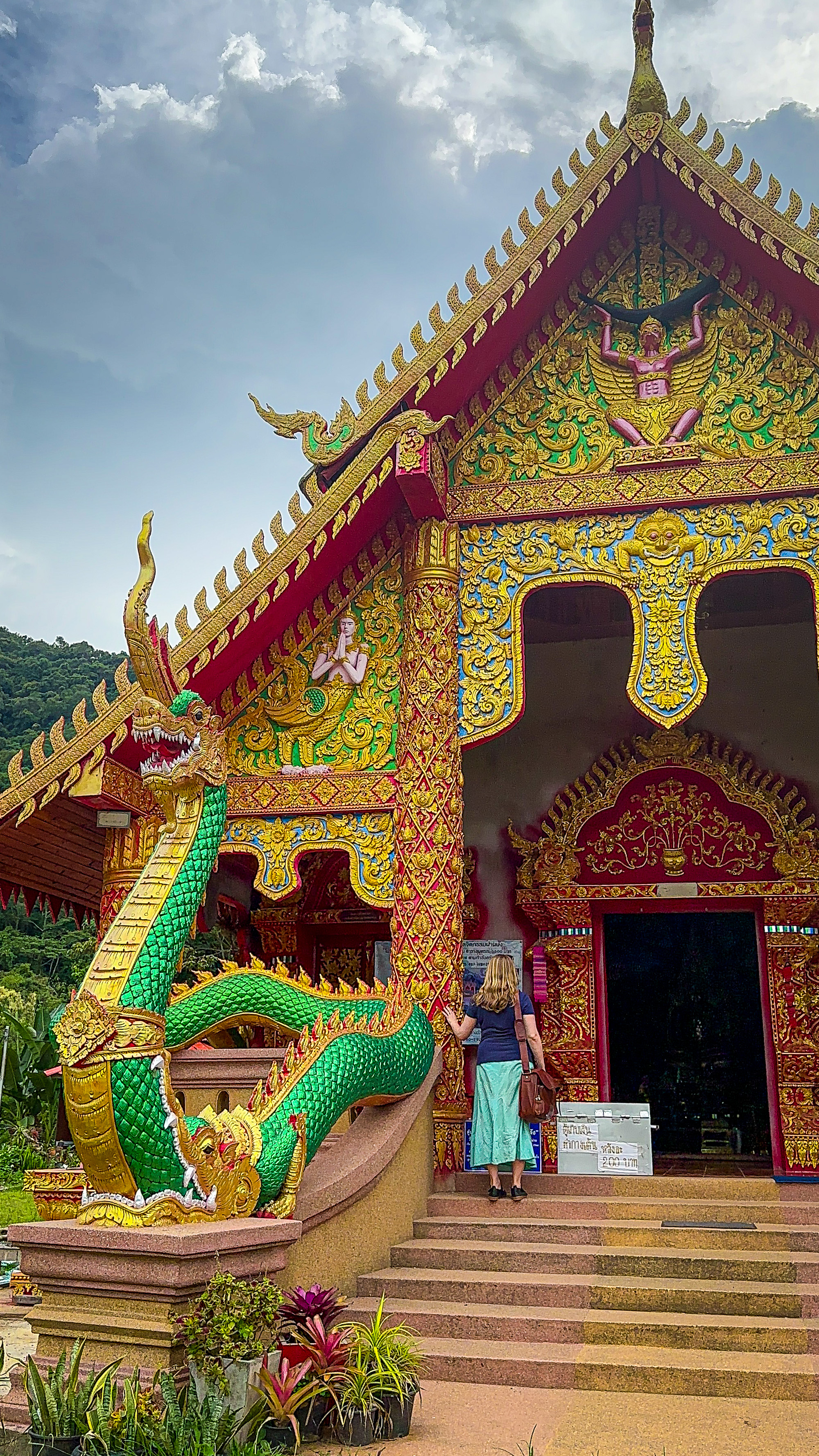
If you have more time, add these temples to your list of the best things to do in Nan.
- Wat Phrathat Chae Haeng. This 14th-century temple is high in the sky, but locals say it is totally worth the effort. Perched at the top of a hill with sweeping views of the city, Wat Phrathat Chae Haeng is home to a majestic golden pagoda that enshrines a sacred relic of the Buddha. As you climb the 289-step staircase, focus on the temple’s striking Lanna-style architecture and enjoy the surrounding views.
- Wat Ming Muang. For a cultural lesson, visit the Wat Ming Muang, a temple complex that serves as a testament to the region’s spiritual devotion and artistic prowess. Admire the temple’s ornate façade, adorned with intricate gold leaf patterns and delicate glass mosaics that shimmer in the sunlight.
- Wat Phra That Khao Noi. This temple has a serene hilltop location which overlooks the charming city of Nan. The main attraction is the majestic, gilded standing Buddha statue, which appears to watch over the city. Wander through the manicured gardens, take in the panoramic views of Nan and its surrounding mountains, and experience the tranquil atmosphere that envelops this sacred site.
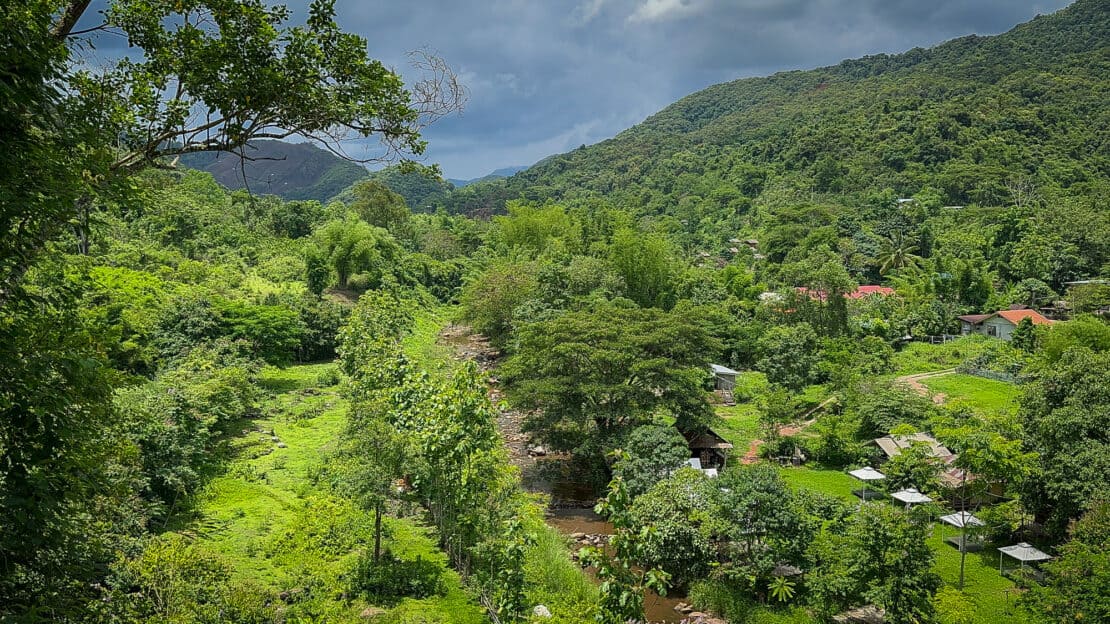
Nan’s Outstanding Natural Landscapes
As we’ve mentioned already, Nan is perhaps most famous for her green, green and let’s use the word green again hilly mosaics.
Stroll along winding footpaths between rice fields, taking in the sights and sounds of rural life as farmers cultivate their crops using time-honoured methods. Hike, cycle or take a road trip with a few choice pit stops.
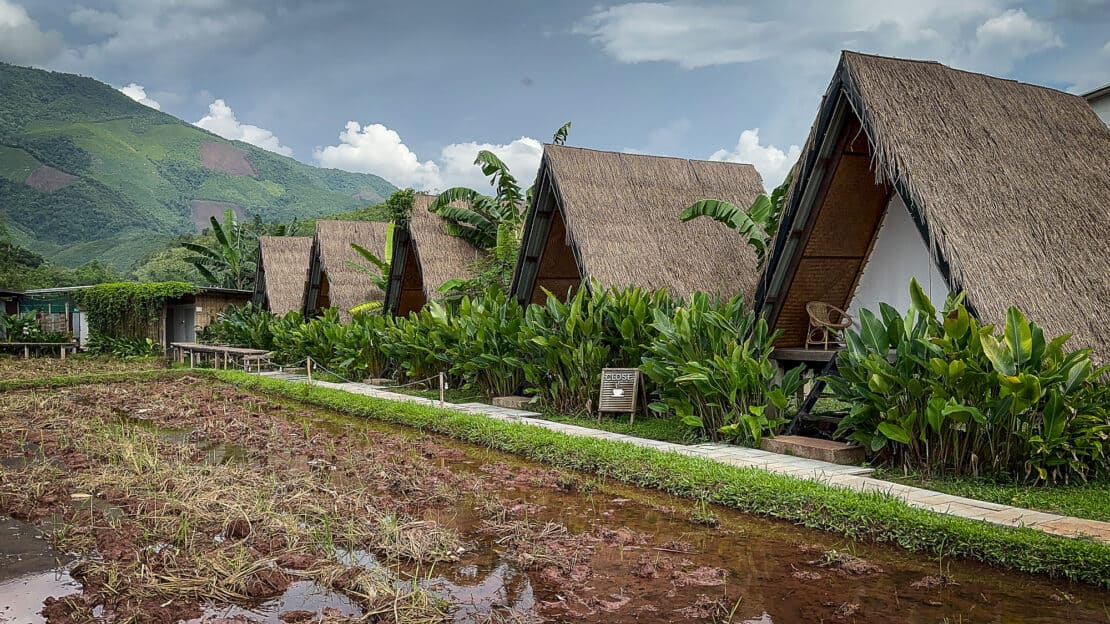
Sapan Village and Waterfall
Pretty little Sapan offers a peek into traditional small village life in Thailand, with its rustic wooden houses, ancient temples, and slower pace of life.
But change is afoot. When we visited, we saw new glamping pods under construction and I’d highly recommend making a stop at both Bo Kluea View and Yud Wela Cafe for food and drink with excellent views.
Sapan also has a waterfall, whose volume changes with the season. It’s a short but slightly steep walk up to the water but it’s a lovely chance to feel the cool shade of the leaves and the soft water spray.
Pua district comes highly recommended for a similar relaxed vibe with spiky-soft green hills.
The Poetic Morning Sea of Fog
One of the best ways to fully embrace Nan is to get lost in its morning sea of fog.
Experience this natural phenomenon by rising early and climbing to one of the region’s many viewpoints, such as Doi Samer Dao or Khun Sathan National Park. There, you can witness the mist-shrouded valleys and mountains bathed in the golden light of sunrise.
Or, you can just take a window seat on a plane at the right time instead.
More Natural Highlights in Nan
- Go rafting on the scenic Wa River. Keep your eyes peeled for exotic birds, cheeky monkeys and other wildlife.
- Connect with nature at Sri Nan National Park. Explore this sprawling natural sanctuary with its diverse flora and fauna. On the extensive network of trails, look out for the elusive Indochinese tiger and majestic Siamese fireback pheasant. Don’t miss the spectacular Doi Samer Dao waterfall.
- Climb Doi Samer Dao. Summit this peak by hiking through dense forests and undulating hills to a peak that overlooks a sea of mist-covered valleys and distant mountain ranges. For the best photos, camp overnight.
- Doi Phu Kha National Park, home to dense forests, towering mountain peaks, and cascading waterfalls. Try to find the striking Chomphu Phu Kha blossom, endangered serow and the colourful Siamese fireback pheasant.
- Tham Pha Tup Forest Park. Wander through the park’s dense jungles, uncovering hidden limestone caves with stalactite and stalagmite formations. Keep an eye out for the vibrant scarlet minivet and the melodious white-rumped shama.
- Sao Din Na Noi Earth Pillars. Sculpted by centuries of erosion, these towers stand like sentinels creating an otherworldly tableau.
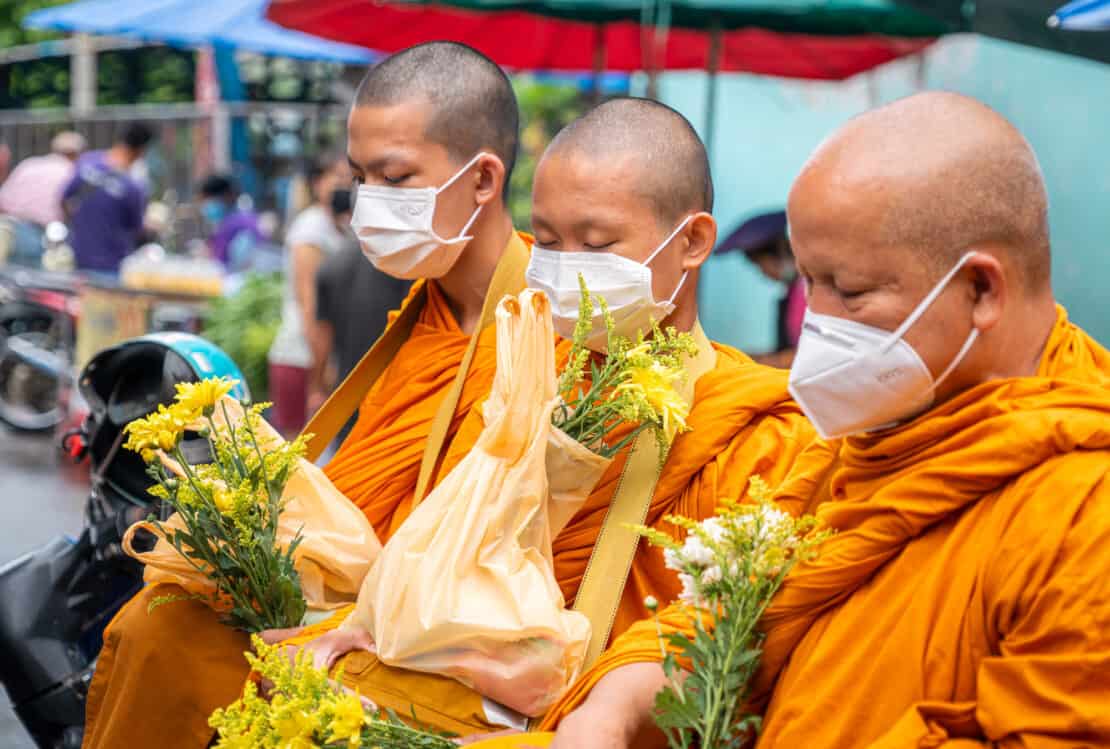
Explore the City of Nan
Nan city itself is great fun, full of buzzing motorbikes, ancient temples, breezy boulevards, chattering schools and narrow streets with all the colours of life up close.
And as ridiculous as it may sound, an open air tram tour is an amazing way to get your bearings and see most of the main sights. You’ll also thank me for the breeze if it’s a particularly hot and sticky day.
Look out for:
- Traditional wooden houses. Constructed from teak and other indigenous materials, these residences demonstrate the exceptional artistry and architectural innovation of Nan. The elaborate carvings, ornate window shutters, and graceful verandas make each one unique.
- Nan Riverside Arts Space. This innovative cultural hub on the river showcases an eclectic array of exhibitions, installations, and performances by local and international artists alike.
- Nan National Museum. Set within a beautifully restored former palace, the museum exhibits a vast collection of ancient artefacts, sacred relics, and traditional art. Stand out pieces include the iconic Black Elephant Tusk, a symbol of Nan’s royal ancestry, and a remarkable display of prehistoric pottery and tools.
- Noble Houses: the elegant Khum Chao Luang Muang Nan and the charming Khum Muang Khaek both offer guided tours for an immersive historical experience.
- Temples! See above for the list of the best.
- Thai massage. Not technically a city sight but definitely one of the best things to do in Nan.
- A 711. Our hosts joked that no Thai person can last a day without a visit to one and it’s definitely worth popping in to see how things differ to convenience shops at home.
What to Eat in Nan, Thailand
Of course, one of the best things to do in Nan is to enjoy the food! Delight in the area’s culinary offerings, from fragrant bowls of Khao Soi to sweet mango sticky rice.
And please don’t leave Nan without experiencing the bustling local markets, where you’ll see frogs on sticks, sizzling chicken, intricately woven textiles and ornate silver jewellery.
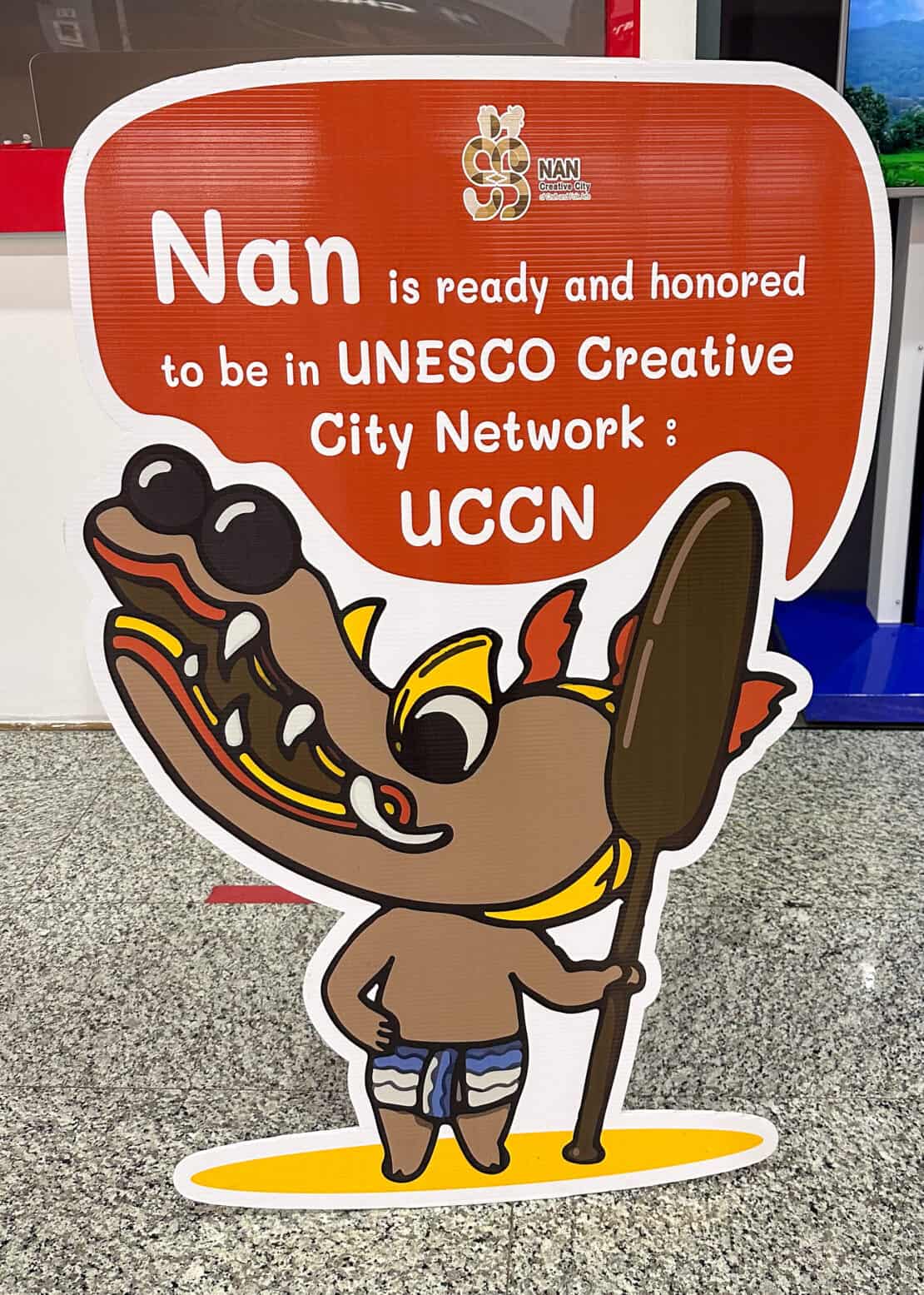
Where to Stay in Nan
We stayed in the Nan Boutique Hotel, a friendly, clean and beautiful spot, but here are a few more options to consider:
- Luxury Hotels: The Nan Noble House Garden Resort and Pukha Nanfa Hotel offer luxurious rooms, top-notch amenities, and exceptional service.
- Mid-Range Hotels: S.P. Guesthouse, Apirata Resort, or Nan Lanna Hotel. These establishments provide a nice dining area, cosy rooms, essential amenities, and friendly service at reasonable prices.
- Budget-Friendly Guesthouses and Hostels: For budget-conscious travellers, guesthouses and hostels such as Winhouse Nan, Hug Nan Hotel, or Tha Wang Pha Riverside Homestay are recommended. They offer basic yet clean and comfortable rooms with shared or private facilities at affordable rates.
- Homestays and Airbnb: Consider staying in a homestay or booking an Airbnb. If done right, this option allows you to interact with locals and experience their way of life while enjoying a comfortable and authentic stay.
Where to go next
A trip to Nan dovetails well with a trip to the neighbouring province of Phrae. You can check out the best things to do in Phrae over here.
Hungry for more? Get your fix with our guide to Thailand’s national dish.
Form Thailand, you can also take a ferry ride to Luang Prabang, an ancient capital and UNESCO World Heritage Site. The trip along the Mekong River passes through forests, towering cliffs, and idyllic riverside villages.
And, of course, a trip to Thailand pairs well with a trip to Vietnam, too.
- How to spend 3 days in Hanoi
- What is autumn like in Hanoi
- The floating villages of Vung Vieng in Halong Bay
